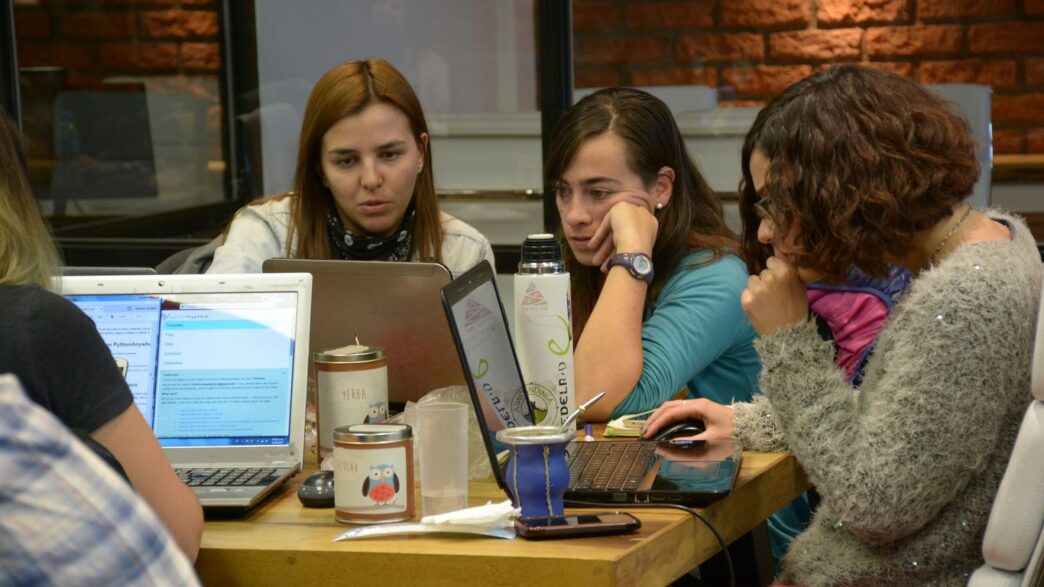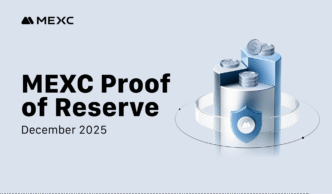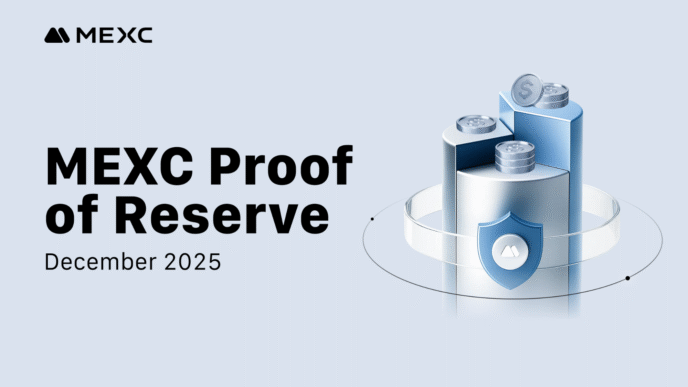When you’re looking for ways to make your stories stand out, nothing beats a good example. Some brands and organizations have figured out how to turn everyday events into powerful news features. These stories grab attention, stick in people’s minds, and sometimes even change how we see the world. If you’re searching for news feature examples that can help you tell better stories in 2025, this list is for you. Let’s check out ten real-world stories that show what’s possible when you mix honesty, emotion, and a bit of creativity.
Key Takeaways
- Real stories about people and causes connect more than just product features.
- Turning data into a story makes it more interesting and easier to remember.
- Sharing customer experiences can be more convincing than traditional marketing.
- Linking your story to bigger social or cultural movements can make it more powerful.
- Keeping your brand’s story consistent, but letting it grow over time, helps build trust.
1. Dawn Dish Soap – The Big Picture
Dawn didn’t just sell soap—they started telling a bigger story back in 2013. “The Big Picture,” a nine-part documentary, put a spotlight on both Dawn’s cleaning power and its part in wildlife rescue. When rescuers cleaned oil-slicked birds with Dawn, it made you realize the product could help way beyond the kitchen sink. That first episode, with ducks getting scrubbed clean, basically turned ducklings into Dawn’s unofficial mascots. Now, those ducklings are found on most Dawn bottles, and you still spot them in ads more than a decade later.
Here’s what stands out about this campaign:
- Real rescue workers were interviewed, bringing in true emotion and buy-in.
- The docuseries mixed those interviews with honest footage of birds being saved—no fancy effects, just real-life cleanups.
- Every episode quietly reinforces how Dawn can cut through tough grease yet still be safe for animals.
It’s not hard to see why Dawn keeps coming back to this story. Instead of talking up the product in generic terms, they showed the soap in use—sometimes in life-or-death situations. This approach didn’t just build trust; it created a lasting, memorable brand identity that still feels genuine in 2025.
2. Dove Real Beauty Campaign
Dove’s Real Beauty campaign has changed the way brands talk about self-image. Back in 2024, they put out a video called "The Code" as part of their Self-Esteem Project, and it struck a nerve. The short film starts with a young woman asking an AI bot to show her what “confident, beautiful women” look like. At first, the AI spits out images of women who fit the same old, very narrow beauty standards—filmsy, blonde, basically all lookalikes. The real twist comes when she tries again, but tells the AI to use Dove’s definition. Suddenly, she’s seeing photos of women of every size, color, and hair type. It’s simple and very human—Dove saying, "We see you," to a whole lot of people who felt left out before.
This push against limited beauty standards didn’t just grab attention, it helped redefine how brands talk about identity and diversity. Here’s what stood out about Dove’s approach:
- Kept it short and real: The video runs only about a minute, but it gets the message across clearly.
- Laid out the facts up front: Dove shows quick stats about AI and its effect on how women see themselves.
- Made a promise: Dove states directly that they won’t use AI to manipulate or change women’s images in their ads.
There was impact beyond just buzz:
- The brand built trust by being open about its creative process.
- Conversations around the campaign spread fast on social, with many sharing their own stories of self-image.
- The message connected especially with younger audiences, who are pretty fed up with brands pushing fake or altered images.
In a world where brands often take the easy way—polished, unrealistic visuals—Dove doubled down on being relatable. They showed that choosing to be upfront and using real stories isn’t just talk; it works, and people notice.
3. Patagonia Environmental Storytelling

Patagonia’s storytelling doesn’t really follow the usual playbook for big brands. Instead of pushing flashy ads, they focus on sharing honest stories about people and the environment. For years, the company has told customers not to buy new stuff, but to repair and reuse what they already own. That message sometimes feels backward in an industry built on selling more jackets, boots, and outdoor gear, but it fits Patagonia’s core values.
Some key ways Patagonia builds its unique narrative:
- Highlight real stories from outdoor communities, especially those who protect nature.
- Use campaigns like “Don’t Buy This Jacket,” urging folks to consider if they really need something new.
- Build trust by being open about their environmental impact—good or bad.
Patagonia’s approach has tangible effects. For example, their Worn Wear program keeps thousands of products out of landfills each year. Here’s a quick breakdown:
| Year | Items Kept in Use |
|---|---|
| 2022 | 98,000 |
| 2023 | 112,000 |
| 2024 | 126,000 |
They also try to point out that their workers and partners aren’t just tools for marketing—they’re experts and advocates, a bit like public lands employees who stand by their principles. Their messaging never tries to gloss over tough truths, and that’s rare in retail. By keeping things grounded and pushing people to care for their gear (and the planet), Patagonia’s environmental storytelling definitely stands out. Some might even call it gutsy.
4. Airbnb Host Stories
Some of the most moving stories don’t come from the top, but straight from the people who actually use a product or service every day. Airbnb’s "Host Stories" get this totally right. Instead of slick ads or corporate statements, these are quiet, sometimes raw stories from hosts talking about what opening their homes has meant—not just to their guests, but to themselves.
The magic is in how real and unfiltered these accounts feel—sometimes joyful, sometimes a little sad, but always personal. Some stories feature a family rebuilding their lives after disaster, while others highlight hosts finding new friendships, partly through chance, partly through sharing a living space. The format is simple: straightforward articles (or sometimes short videos), told in the hosts’ own words. No sales pitch. No pressure.
What stands out about Airbnb’s approach:
- The brand takes a step back, letting hosts and their stories lead.
- Articles are easy to share and understand; you get the feeling you’re reading a note from someone you might meet at a coffee shop.
- The stories help guests and would-be hosts relate to one another, making Airbnb feel more human and less like a faceless tech company.
If you’re a brand, there’s something to learn here: let real people talk about their experience, and don’t worry about being polished or perfect. Instead, focus on being honest. Airbnb does a great job with this, and—thanks to their presence on social media platforms as well—they reach even more folks with these stories, showing how important the right channels are for sharing authentic experiences (focus on the platforms that work best for you).
In short: if you want your stories to matter, try putting your customer’s voice at the center, like Airbnb. It just works.
5. Spotify Wrapped
There’s no doubt that every December, Spotify users look forward to the big reveal of their personal Spotify Wrapped.
Why is that? Instead of listing song stats, Spotify Wrapped crafts a personalized story around your year in music. People don’t just get numbers—they get a narrative that sparks memories and conversations. You remember the summer you played that one song on repeat, or maybe laugh at how often you queued up embarrassing tracks. This isn’t just data—it’s storytelling with an emotional twist.
Spotify Wrapped transforms your listening history into shareable highlights. That nudges millions to post their results all over social media. It’s not uncommon to see feeds filled with friends’ top artists, top genres, and even guilty pleasure tracks. That sense of celebration and nostalgia is infectious.
Here’s a breakdown of what makes Spotify Wrapped so effective:
- Wrapped creates personalized stories that make data feel meaningful.
- Social sharing is built in—everyone gets their own recap to post online.
- It sparks conversations and even a bit of friendly competition between friends.
- The campaign keeps Spotify in the news and on people’s minds year after year.
Major music events and discoveries are also part of the broader Spotify editorial highlights, helping shape what gets remembered each year alongside Wrapped. This regular celebration of users not only keeps people excited but also cements Spotify’s spot as a true part of everyday culture.
6. ServiceNow Thought Leadership
A few years ago, hardly anyone outside of IT circles knew the ServiceNow name. Fast forward to 2025, and the company has put itself on the map, not by advertising its software features, but by changing the story it’s telling. ServiceNow made a smart shift: instead of just selling products, they started focusing on tackling big-picture topics in tech.
Their flagship content project, Workflow Quarterly, is a digital magazine that picks a single industry trend every quarter and digs deep. Topics range from ESG (environmental, social, and governance) to the changing landscape of risk management. They decided to make this magazine mostly about industry change, using new voices and pieces of research—not just thinly veiled product pitches.
There’s a lot to take from how ServiceNow handled thought leadership:
- They built credibility by focusing on helpful, educational stories about the whole industry, not just their corner.
- Their content team worked closely with subject-matter experts, rather than only writers or marketers.
- Each issue of Workflow Quarterly is managed almost like a traditional newsroom, complete with an editor in chief and regular editorial meetings.
Structured storytelling paid off. Just look at some numbers:
| Year | Employees | Annual Revenue |
|---|---|---|
| 2018 | 9,000 | $2.6 billion |
| 2023 | 22,000+ | $8.5 billion |
| 2025 (projected) | ~24,000 | $11+ billion |
This approach shows how brands—even those in hard-to-explain B2B tech—can grow their reputation by creating content people want to read. If you want to see how tech updates are driving these sorts of changes, it’s worth checking out the latest trends like the recent technology news and updates around workflow tools. Bottom line, ServiceNow didn’t just talk about thought leadership—they put in the work, built processes, and trusted their editorial vision.
7. Volvo Penta Young Surfers Campaign
Most people probably don’t think of marine tech when they picture young surfers chasing waves, but that’s exactly what made the Volvo Penta Young Surfers Campaign stand out. Volvo Penta, traditionally known for supplying marine propulsion, took a different approach: they featured three young women surfers as they set out for Norway’s Lofoten archipelago. The twist? The focus was on the adventure, not the engines or boats.
By highlighting the surfers’ experiences—rather than product specs or shiny tech—the brand managed to feel more real, more accessible to a whole new crowd. They ditched the usual scenes (think: dudes lounging on yachts) and handed the spotlight to an energetic, diverse crew.
A few things made this campaign memorable:
- They used a mix of video stories, tech-focused clips, photos, and behind-the-scenes articles to build curiosity and keep people coming back for more.
- All the content landed on social media, Volvo Penta’s website, and a handful of other digital spaces, but they didn’t push it too hard with ads. Instead, most of the views came from people sharing and commenting.
- The themes—adventure, possibility, and the grit required to surf wild northern waves—gave the brand a fresh voice.
Here’s a quick look at the results:
| Metric | Value |
|---|---|
| Total Impressions | 6.5 million |
| ThruPlays (15+ sec) | 725,000+ |
By letting the story lead, Volvo Penta reached a younger crowd and proved you can sell an idea without always selling a product. The campaign is a reminder: sometimes, you have to do something totally unexpected to get noticed.
8. TOMS Social Impact Evolution

TOMS has had quite the journey when it comes to brand storytelling. In the early days, you probably remember them for their "One for One" promise: buy a pair of shoes, and they’d send a pair to a child who needed them. It was a simple idea, but it really struck a chord with shoppers and set TOMS apart from other shoe brands right out of the gate. That concept wasn’t just clever marketing—it turned into a real movement. If you’re curious about the nuts and bolts, there’s a breakdown of the "One for One" model and its ripple effects on TOMS’ reputation and impact at this in-depth exploration.
But since then, TOMS has gone through some big changes. They realized giving away free shoes wasn’t always enough or even what communities truly needed most. Instead of sticking to the old way, they started looking at broader community support and local partnerships. Their messaging shifted, but they held onto that core value of making a difference.
One key to TOMS’ lasting story is how they’ve managed to adapt goals and tactics without losing their heart. It’s not just about the shoes anymore—it’s about being part of tough conversations and helping solve bigger problems.
A few things stand out about their evolving approach:
- They moved from one-for-one giving to supporting grassroots organizations and grants.
- The storytelling feels more honest now—they own up to past mistakes and aren’t afraid to show where things didn’t go as planned.
- There’s a clear focus on social justice and mental health, not just material aid.
If you’re writing features and want them to last, there’s a lesson here: let your narrative change as your subject changes. People can spot empty promises, but if you show real growth and honesty, that’s when your readers connect. The TOMS example proves that sticking with your values—while changing the way you put them into action—can keep your story powerful year after year.
9. Procter & Gamble Stories of Diversity
Procter & Gamble, or P&G, has built a real track record for telling stories about real people—especially people whose voices can be hard to hear in the mainstream. They don’t just show their products or drop in a sales pitch; instead, they start from a place of purpose. The heart of their recent storytelling efforts is all about lifting up diversity and supporting communities that have been overlooked.
A good example from the past couple of years is their work focusing on diverse representation in media—not just in front of the camera, but behind it too. They’ve partnered with creators of different backgrounds and produced campaigns that celebrate families, cultures, and lives that look nothing like the usual ads.
Here’s what stands out about their approach:
- Every campaign is based on true, personal stories. There’s an honesty that’s hard to fake.
- P&G creates space for people to talk about issues like identity and inclusion, without making it all about the brand.
- The content reaches across platforms: TV, podcasts, even social events.
To put this into perspective, let’s look at a sample of the types of stories they’ve produced and what they focus on:
| Campaign Focus | Type of Stories | Key Message |
|---|---|---|
| Media diversity | Filmmakers & creators | Representation |
| Family traditions | Multigenerational voices | Acceptance |
| Everyday heroes | Community storytellers | Inclusion |
All brands can tell these kinds of stories, but P&G proves you can use your reach to highlight people who don’t have a big platform. They stick with this idea consistently.
It’s a little like what Virgin Galactic is doing by unveiling a new spaceship for space tourism—it’s not just about the product, but about opening new worlds to more people. For P&G, it’s about showing that brands can push the conversation forward by simply giving the spotlight to others.
10. Manchester City Georgia Stanway Feature
Not every sports story is about the win—you know, sometimes it’s about everything that happens between the first kick and the final whistle. The Manchester City feature on Georgia Stanway does this so well. It’s a personal look at a player who didn’t just follow a polished career path, but carved her own, making tons of tough choices all along the way.
There’s something about Georgia’s story that just works. You get the sense she truly loves the game, but it hasn’t all been easy for her. The feature talks about:
- The challenges she faced growing up and how she almost missed her chance to go pro
- Her journey moving away from home as a teenager to follow her soccer dreams
- The way Manchester City actively supports and celebrates women’s sports
They don’t just show her high points. You get real talk—injuries, self-doubt, those moments everyone faces but rarely admits. And instead of spotlighting the club non-stop, the story keeps the focus on Georgia as a determined person, which, honestly, draws anyone in, even if you aren’t a die-hard soccer fan.
Here’s what stands out from the feature:
- Real interviews with Georgia, her coaches, and even her family—no script, just honest thoughts.
- Game stats used to tell the story, not just to fill space. Check this out:
| Season | Games Played | Goals | Assists |
|---|---|---|---|
| 2022-23 | 27 | 12 | 8 |
| 2023-24 | 29 | 14 | 9 |
- Scenes showing her training solo in the rain—those moments when no one’s watching and she’s still giving it 100%.
It feels like a story you could relate to, even if you’ve never played a sport. You see how Manchester City isn’t just talking about supporting women in football—they’re proving it, by lifting up voices like Georgia’s. That’s what makes the whole feature feel honest and actually inspiring.
Wrapping Up: Your Story Matters
So, there you have it—ten real-world examples that show how powerful storytelling can be, even in 2025. The thing is, you don’t need a massive budget or a famous brand to tell a story that sticks. It’s about finding the human angle, sharing real experiences, and being honest about what your brand or project stands for. Whether you’re highlighting a customer’s journey, using data in a way that actually means something, or just letting your team’s personality shine through, it all comes down to making people care. Try out some of these ideas in your next piece. You might be surprised at how much more people remember your story than any list of features or stats. At the end of the day, stories are what connect us—and that’s not changing anytime soon.
Frequently Asked Questions
What is news feature storytelling?
News feature storytelling is a way of sharing real stories that grab attention and make people feel something. Instead of just giving facts, it uses emotions, personal stories, and creative writing to keep readers interested.
Why are brand stories important in 2025?
Brand stories help companies stand out in a crowded market. In 2025, people want to connect with brands that share real values and stories, not just products. Good stories build trust and loyalty.
How can I use data in my stories without being boring?
Try turning numbers and facts into personal stories. For example, Spotify Wrapped uses listening data to tell each user a fun story about their year in music. Always look for the human side of the data.
What makes a customer story powerful?
A strong customer story focuses on the person, not the brand. Show how your product or service made a real difference in their life. Use their own words and real experiences to make it feel honest.
How do I keep my brand story fresh over time?
Let your story grow as your company changes. You can add new ideas and show progress, but always keep your main message the same. This helps people see that you are real and reliable.
Can visual storytelling help my brand?
Yes! Pictures, videos, and graphics can make your story easier to understand and remember. Visuals help people connect with your message quickly and can make your brand stand out.














